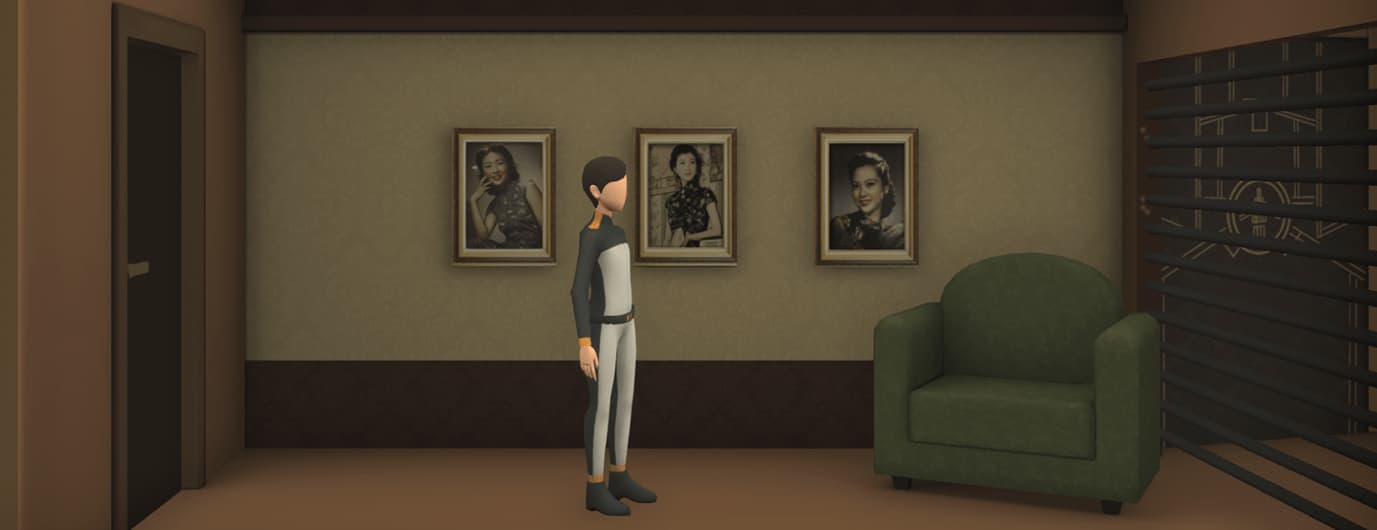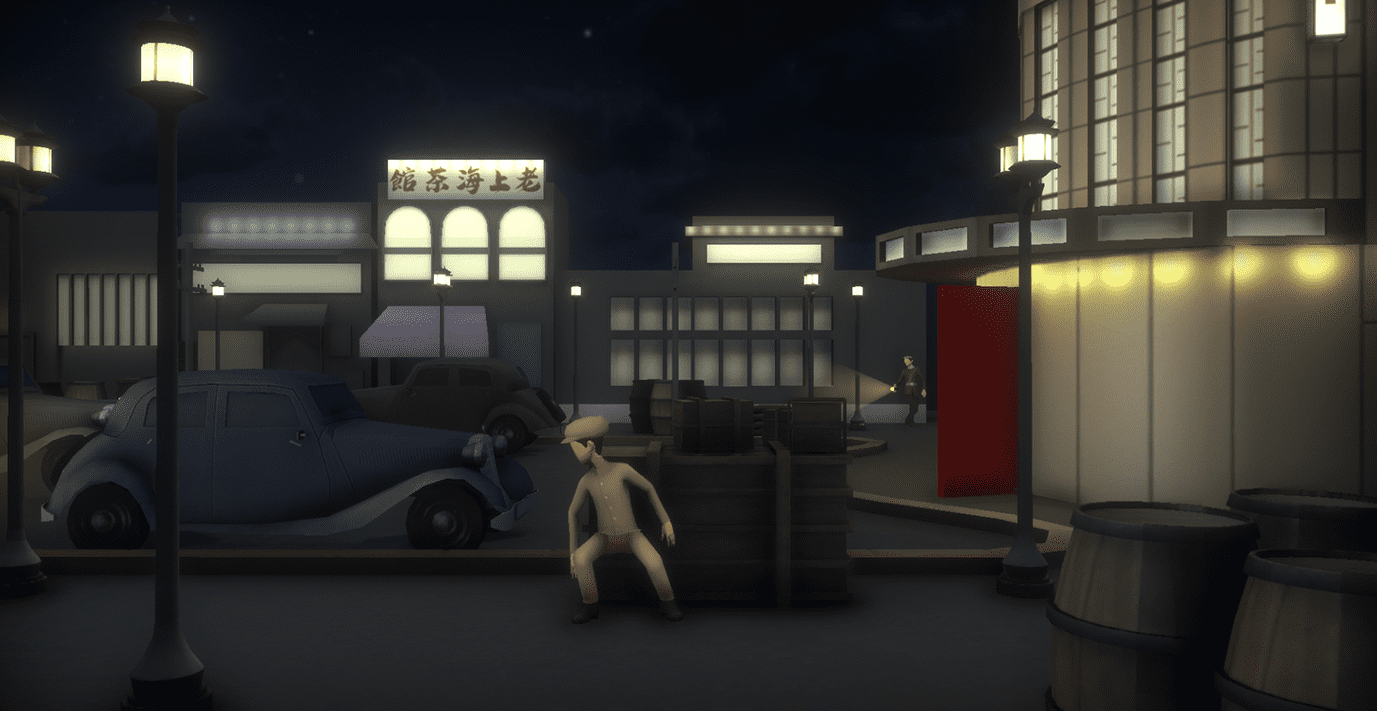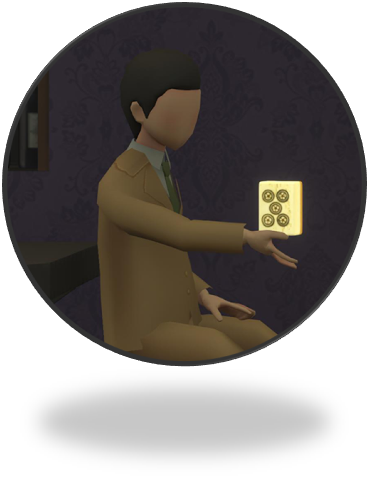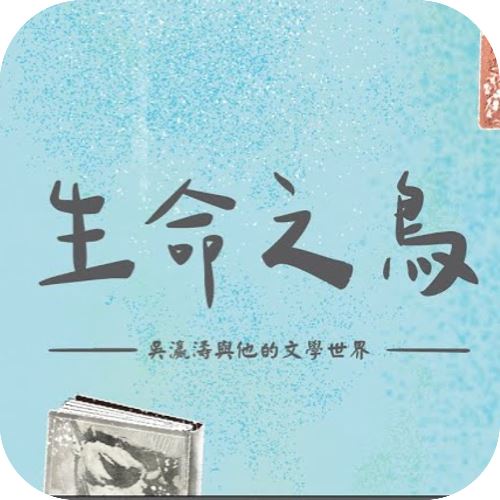
About the Game
This project bases on the life of Liu Na-ou, a film producer and novelist during Japanese colonial period of Taiwan. The inspiration for the game is the Mahjong of Liu Na-ou, one of NMTL’s collections. The game stretches from Shanghai Paramount, Tianjin Wanguo Bridge, Da Hinggan Range, Heilong Jiang, Dingling (Ming), Beijing, and finally to Tainan Hall, Taiwan. With the fictional setup, the players would begin a puzzle quiz-based game.

Game Introduction
Reports show that collections around the world, both the public museums and the private ones, have been missing since 2079. In 2080, a powerful cultural relic in NMTL is stolen. It is Mahjong of Liu Na-ou, which owns the power to change history. INTERPOL suspects the cases are orchestrated by global terror network RISS.

RISS declares they can time travel. There is reliable proof showing RISS attempts to change the history of WWII by the secret agent using Mahjong’s power. The player would play an international secret agent with the codename ‘predator 1940’, then spying into the network of RISS. By travelling back to 1940, the player is to stop RISS’s evil plan and bring back the Mahjong.
Game writer
Lu Ru-shu
I like to keep a low profile and rather be anonymous. But I do keep a Maltese named LeLe. I don’t talk much, love to read. The most joyful hobby is sleeping and writing for self-entertainment. Never inquire about my age and weight.
Characters

Liu Na-ou (1905-1940)
Pseudonym of Liou Tsan-po. He was born to a wealthy family in Tainan, and spent most of his life in Shanghai. He is Multilingual in many languages including English, Japanese, French, Mandarin, Cantonese, and Taiwanese. He translated many literary works and film-theory books. Besides writing, he also ran a bookstore, published magazines, and produced films. “New Feeling” (Shinkankakuha) is his main thoughts and literary style. It was a significant movement both in literature and film.
In 1940, He was assassinated in Shanghai.

Yoshio Ichibangase (1883-1964)
Original from Tokyo, Japan, graduated from Tokyo Imperial University with a degree in English and French. He was active in Taiwan‘s high-level Bureaucracy during the Japanese colonial period (late Taisho period and early Showa period). His official rank is five senior officials and the second-class Xun's fourth-class Le appointed official.
He served as an official of the Government of Taiwan, Secretary of State for the Army, Governor of Hsinchu Prefecture, and Governor of Tainan Prefecture. His daughter is the well-known Japanese social welfare scholar Anbang Yasuko (formerly known as Ichibanase Yasuko).

Li Hsiang-lan (1920-2014)
She was active in Man empire as a popular singer, formerly known as Yamaguchi Yoshiko(1920-2014). She was born in a Japanese family in Northeast China, adopted as a goddaughter by the Chinese, then renamed Li Hsiang-lan. Because of the film partnership, she acquainted with Liu Na-ou.
Historical Events and Sites
Assassination of Chen Man-Li
It is one of the criminal pending cases in Shanghai. Chen Man-li, the most popular dancer in Shanghai Paramount Ballroom, was shot and killed on February 25, 1940. There were different views about this incident. Some suggested she was murdered by secret agents or traitors, and some regarded it as a passion crime.
Assassination of Liu Na-ou case
One month after Liu Na-ou took over as the president of the National News Agency, he was assassinated outside “Jinghua Restaurant”.
Paramount (Shanghai)
In the 1930s, Paramount was one of the most prestigious and glamorous ballrooms. Also known as the ‘Top music hall in the East’.
Xinchang Barn
It was located at the old wharf of Shanghai’s South Bund. It was the private barn of Huang Jin-Rong, who was one of Shanghai’s three millionaires.
Wanguo Bridge
It is the bridge connecting Heping District and Hebei District in Tianjin, China. It is one of the significant buildings that remained in the period of Concessions in Tianjin.
Thirteen Tombs of the Ming Dynasty
The tomb of the Ming emperor of China contains 13 Ming emperors, 23 Ming empresses, 2 Ming princes, more than 30 concubines, and 1 eunuch. It is one of the most preserved imperial tombs in the world.
Tainan Hall
It was Tainan’s highest administrative center during the Japanese colonial period in Taiwan. It was designed by Moriyama Matsunosuke, the technician of the Governor-General's Office . It was one of the representative buildings in Taiwan at that time. It was built in Taisho era (1916). It is now the National Museum of Taiwan Literature.
Screen Shots

Game Download
Windows
iOS
Android










